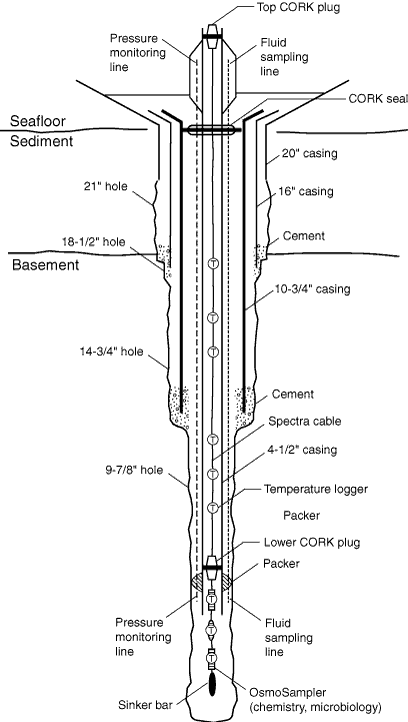
Figure F1. Schematic of casing and CORK systems deployed during Expedition 301, idealized and not to scale. The system shown uses four nested casing strings, like CORKs in Holes U1301A and U1301B, and isolates a single zone of uppermost basement, like CORKs in Holes 1026B and U1301A. All of the CORK systems deployed during Expedition 301 are sealed in the throat of the reentry cone within 10¾ inch casing. The primary CORK casing is 4½ inches in diameter and is sealed with two plugs, one at depth and one at the top of the CORK head. Additional seals are provided by cement at the base of the 16 and 10¾ inch casing strings; see discussion in text regarding CORK design and sealing operations. Expedition 301 CORKs contain up to nine fluid, microbiological, and pressure sampling lines, with ports and screens at various depths, and a variety of fluid and microbiological sampling systems suspended on Spectra cable at depth. Temperatures are recorded with autonomous sensor and logging instruments incorporated into the fluid and microbiological samplers or hung independently from the Spectra cable. Specific configurations for each Expedition 301 CORK are shown in later figures and tables and discussed in the text.

Close | Next | Top of page